The search for Lord Vishnu Avatars is undertaken by those who want to understand how, whenever adharma increased on Earth, Lord Shri Hari manifested in different forms to establish dharma. This subject is not only linked to religious faith, but also serves as a key to understanding every era of Hindu culture. So, let us take you through these avatars in detail-
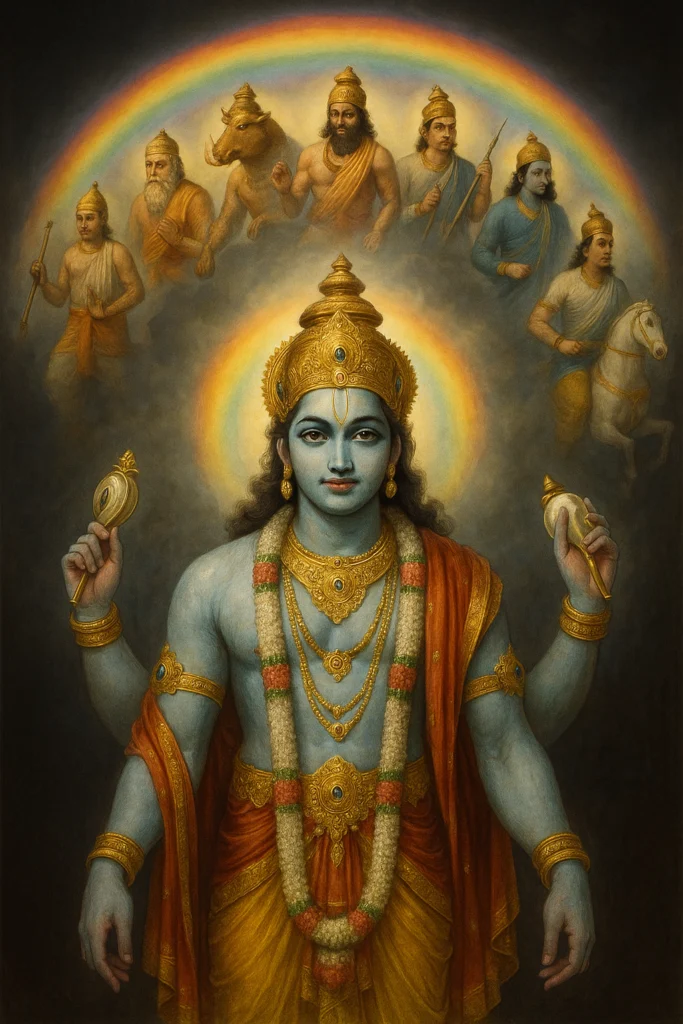
The Signficance Of The 10 Lord Vishnu Avatars
Whenever adharma increases on this Earth and dharma begins to falter, Lord Vishnu manifests in some form. This central idea lies at the heart of the tradition of Vishnu’s ten avatars. These avatars are not mere stories; each form addresses a specific need of the time and brings to life a particular quality or principle. Some protect life, while others establish justice.
If you carefully read the stories of these avatars, you will find that they not only deepen our understanding of Hinduism but also guide us on the path to living life in the right way. These are the same stories that repeatedly remind us that in every era, when darkness prevails, a light always appears to dispel it.
Lord Vishnu 10 Avatars Names and Their Story
The traditional sequence of Vishnu’s ten avatars is not just significant from a religious standpoint it also mirrors the journey of human civilization. These avatars appear in a particular order that reflects the evolution of humanity and the unique challenges faced in different eras. Interestingly, the first five avatars emerged at a time when humans lived close to nature and felt a direct connection with the divine.
1. Matsya Avatar : The Fish Form
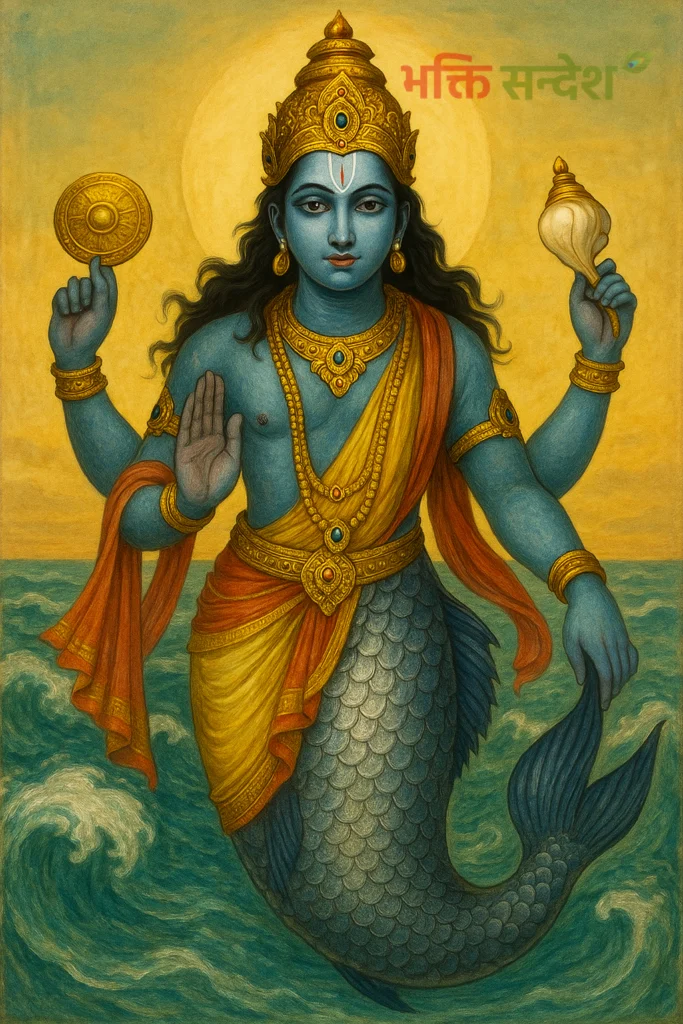
The story begins with a great deluge a massive flood threatening to engulf the entire world. Everything was on the brink of destruction life, creation, and the future itself. In this moment of crisis, Lord Vishnu took the form of a gigantic fish.
He rescued Manu the first man along with seeds of life, carrying them to safety so that creation could begin anew. The Matsya avatar reminds us that no matter how overwhelming the crisis, when the divine is with us, life can always be preserved.
2. Kurma Avatar: The Tortoise Form
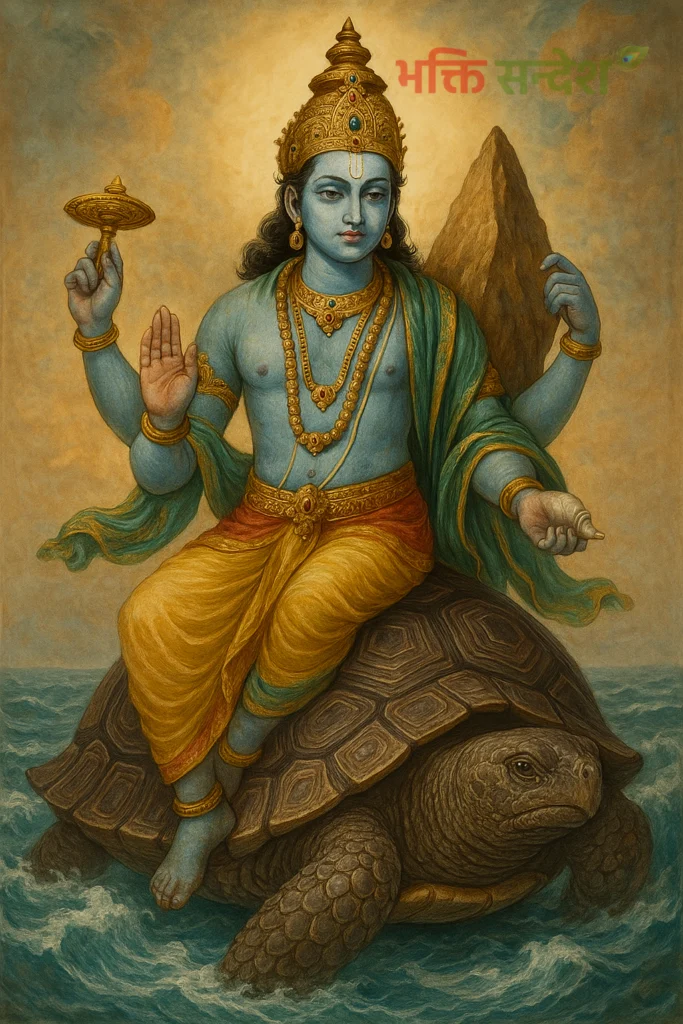
After the flood subsided, the gods and demons came together to churn the ocean in search of the nectar of immortality. But the mountain they used for churning began to wobble and lose balance. That’s when Lord Vishnu took the form of a giant tortois Kurma and supported the mountain on his back. This avatar teaches us the importance of stability and endurance without a strong foundation, even the noblest efforts can falter.
3. Varaha Avatar : The Wild Boar Form
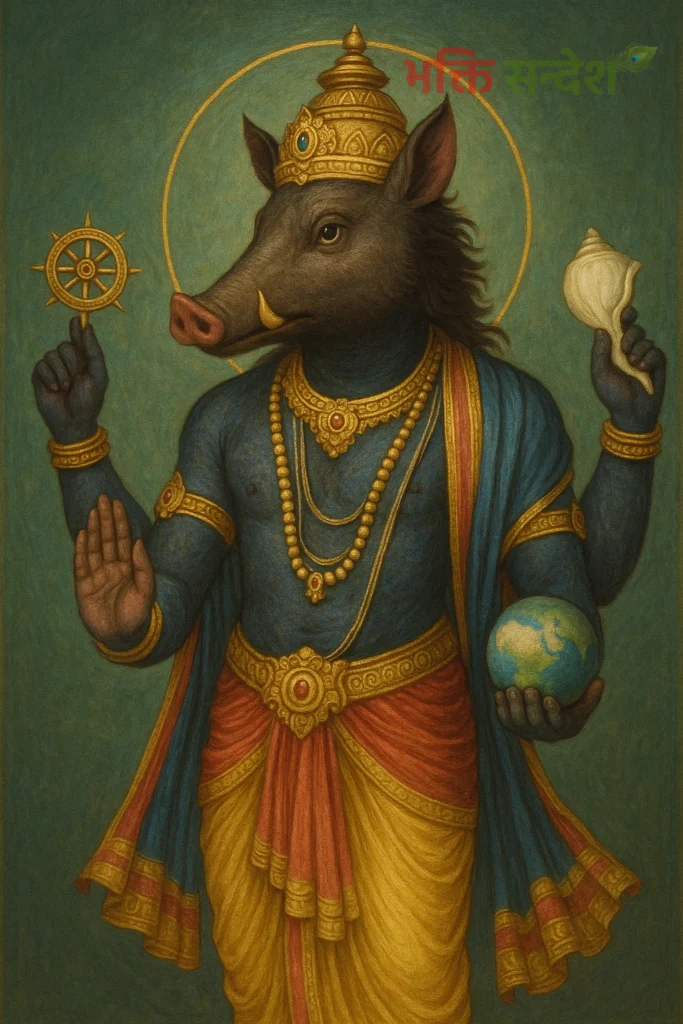
During the churning of the ocean, it was discovered that the Earth goddess, Bhudevi, had been captured and dragged into the netherworld by the demon Hiranyaksha. To restore balance, Lord Vishnu took the form of Varaha — a powerful wild boar.
He lifted the Earth on his massive tusks and defeated the demon, reestablishing cosmic harmony. The Varaha avatar shows us that even when the situation seems impossible, with strength, patience, and the right path, anything can be achieved.
4. Narasimha Avatar : The Half-Man, Half-Lion Form
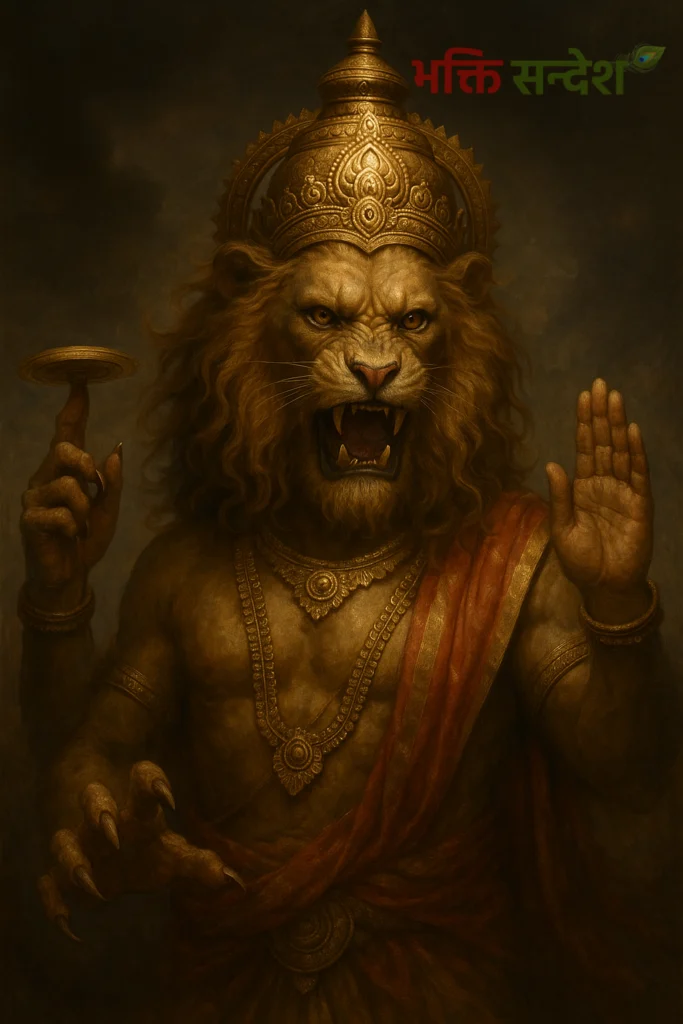
Hiranyakashipu, a demon king, had become so arrogant that he considered himself immortal. His son, Prahlada, was a devout devotee of Vishnu, which infuriated his father. Despite trying to kill Prahlada multiple times, he failed. When the tyranny of Hiranyakashipu crossed all limits, Lord Vishnu manifested in an unexpected form — half man, half lion.
He destroyed the demon without breaking any cosmic laws. The Narasimha avatar teaches us that when a devotee is in danger, the Lord goes beyond rules to protect them — swiftly, powerfully, and justly.
5. Vamana Avatar : The Dwarf Brahmin Form
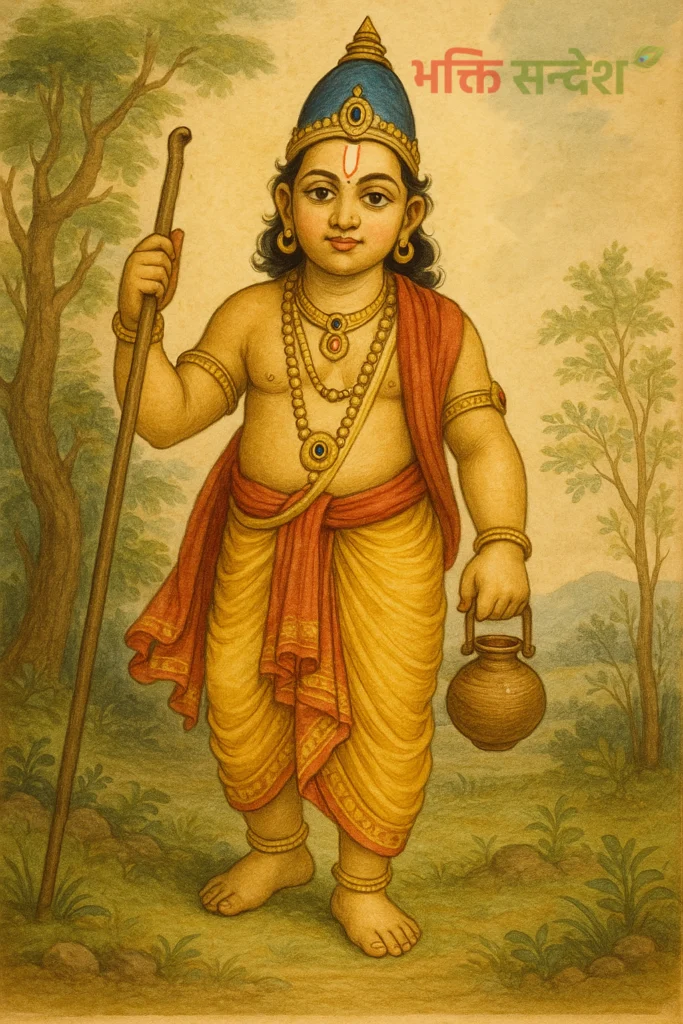
King Bali, though a righteous and generous demon, gradually developed arrogance. His power grew so vast that even the gods were deprived of their share. To restore balance, Vishnu incarnated as a small Brahmin boy, Vamana. He asked King Bali for just three paces of land, and Bali, amused, granted it.
In the next moment, Vamana expanded into a giant form — he measured the entire earth with one step, the sky with another, and sent Bali to the underworld with his third step. This story teaches us that even with humility and strategy, injustice can be balanced — the equilibrium of power is maintained not only by force but by wisdom.
6. Parashurama Avatar : The Warrior Form
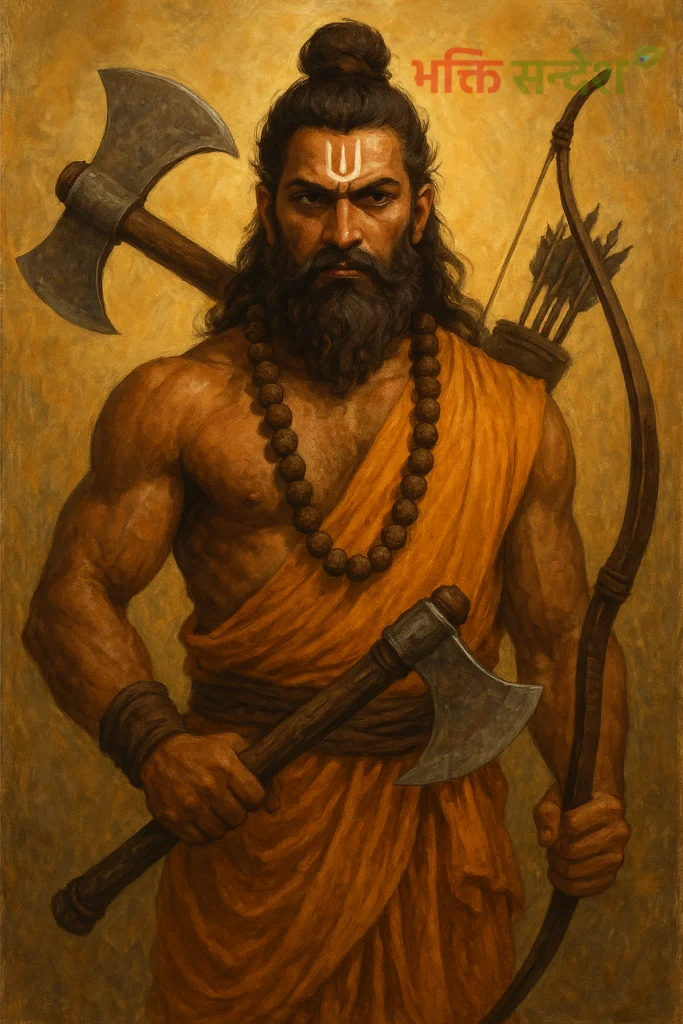
When the Kshatriyas, once the protectors of dharma, became consumed by greed and tyranny, Vishnu incarnated as Parashurama. He wasn’t just a warrior; he was also a sage, wielding his axe in righteous fury. With his weapon, he repeatedly rid the earth of corrupt Kshatriyas. The Parashurama avatar teaches us that when power forgets its dharma, it must be stopped — no matter how mighty it becomes.
7. Ram Avatar: The Ideal King Form
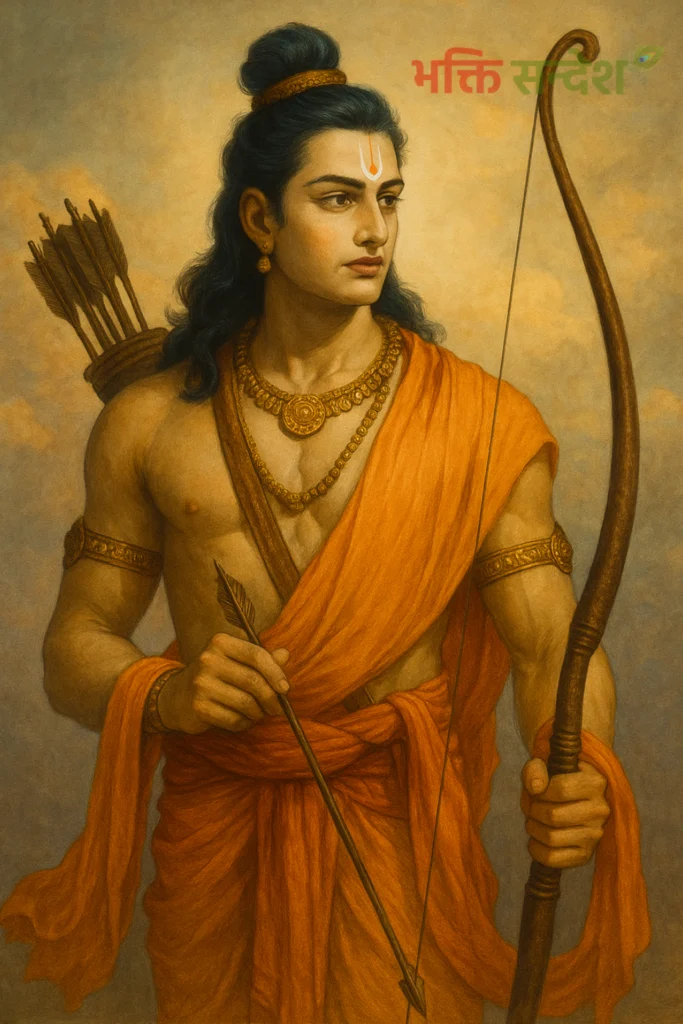
We’ve all heard the story of Rama from childhood, but every time we hear it, it feels different. When Rama was sent into exile due to his father’s vow, he didn’t protest or complain — he followed dharma and went into the forest with Sita and Lakshmana. His life was full of struggles, but at every turn, he upheld righteousness.
His battle with Ravana, Sita’s trial by fire, and the establishment of Ram Rajya all show that a true king is one who lives for others and walks the righteous path, no matter the challenges. Rama teaches us that dharma is never the easy path, but it is always the right one.
8. Krishna Avatar : The Divine and Strategic Diplomat
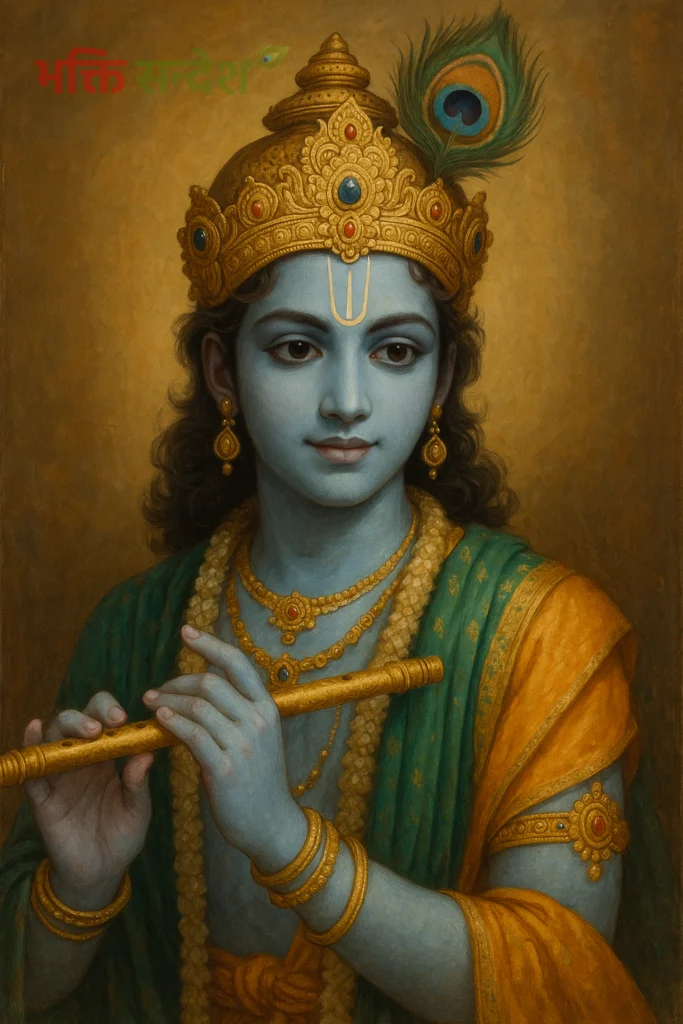
In the Dvapara Yuga, when the throne of Hastinapura became the center of a fierce conflict between two clans the Kauravas and the Pandavas Lord Vishnu incarnated as Krishna. But Krishna was no ordinary warrior. He became Arjuna’s charioteer, guide, and friend. On the battlefield of Mahabharata, through the Bhagavad Gita, he answered the most profound questions of life . What is dharma? What is duty? Why is it important to act, irrespective of the results?
Krishna manifested in many forms — a mischievous child who stole butter, a charming youth who danced with the Gopis, and a brilliant strategist in the political arena. He teaches us that life is not just a straight line, but one full of many colors and layers. The essence of life lies in maintaining balance — inner stability and outward action.
9. Buddha Avatar : The Guide to Peace and Knowledge
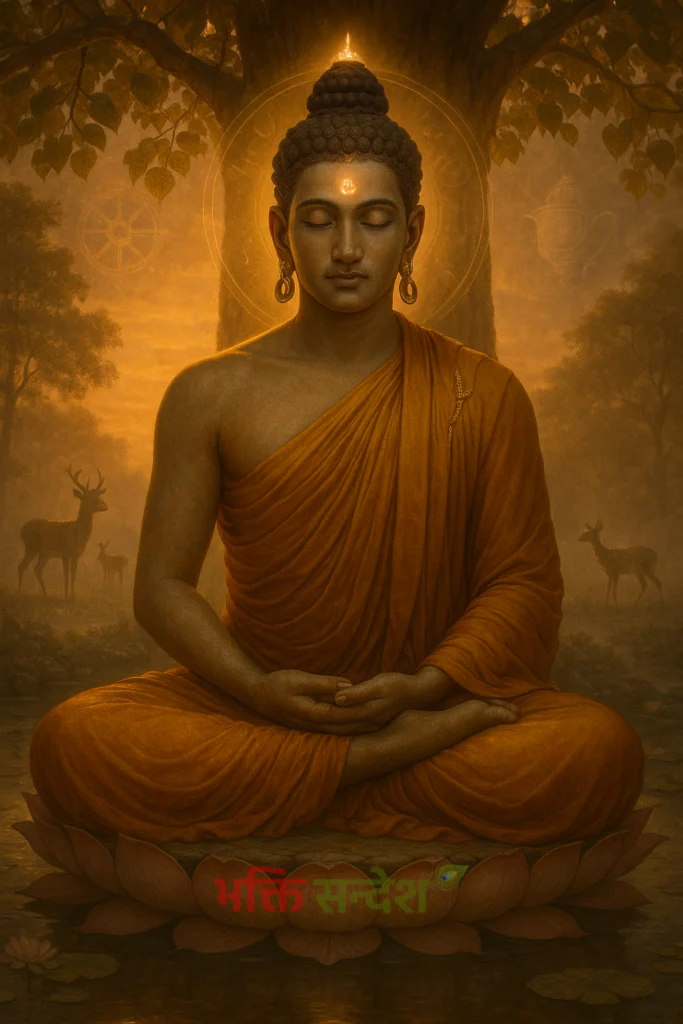
When the world was weighed down by greed, indulgence, and ignorance, Lord Vishnu took an incarnation that symbolized complete silence and peace Gautama Buddha. He did not engage in battles or slay demons. Instead, he sought the truth, meditated, and discovered himself, then showed others the path to peace.
The Four Noble Truths and the Eightfold Path are not just Buddhist principles; they touch upon life’s aspects that we often overlook. When Buddha is seen as an incarnation of Vishnu, it signifies the deep tradition within Hinduism of honoring diversity — every path can lead to liberation, as long as it is rooted in truth and devotion.
10. Kalki Avatar Of Lord Vishnu : The Coming Savior
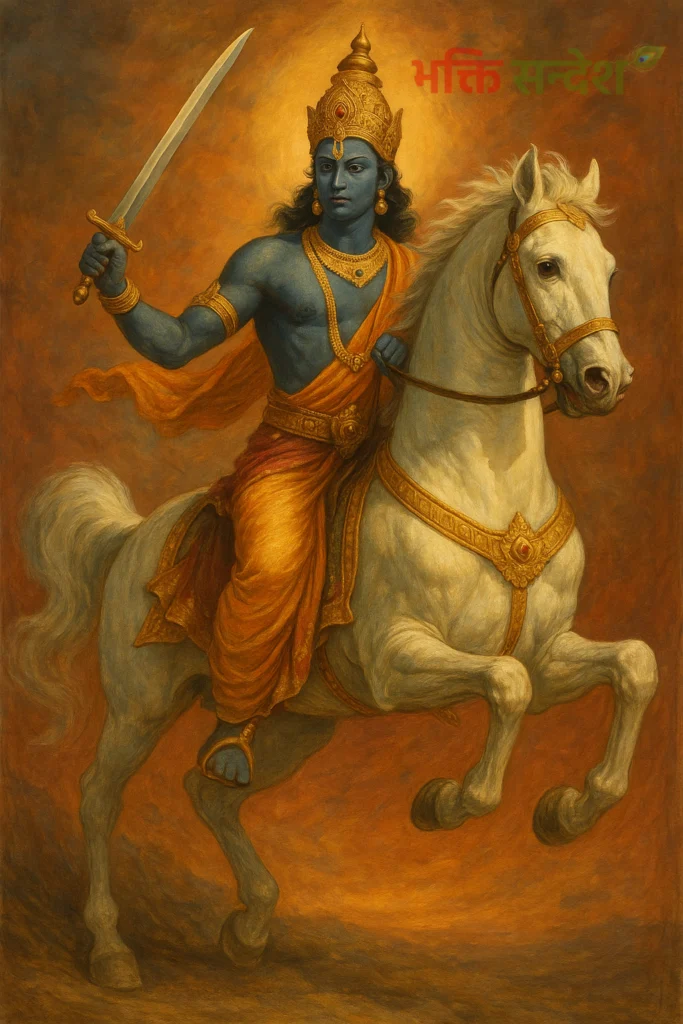
Now, let’s talk about the avatar that has yet to come but one that we eagerly await. In Kali Yuga, where adharma and chaos are on the rise, scriptures predict that Lord Vishnu will manifest for the final time as Kalki. Riding a white horse and holding a blazing sword, he will put an end to adharma and usher in a new era, a time when dharma, truth, and justice will once again prevail.
The Kalki avatar is not just a prophecy it is a collective hope. It is the belief that, no matter how difficult the times may be, a new dawn will surely come. This faith gives us the strength to see light even in the darkest of times.
If you found this information about Lord Vishnu avatars helpful, then read about the significance and chanting method of the Shri Vishnu Sahasranama here, and be sure to explore other content related to Vishnu mantras, so that your devotion can reach greater depths.
FAQ
How many avatars did Lord Vishnu take?
According to the Puranas, Lord Vishnu took 10 major avatars, known as the Dashavatara.
When will the Kalki avatar appear?
At the end of Kali Yuga, when adharma (unrighteousness) will reach its peak, the Kalki avatar will appear.
Which avatar was the first one?
The first avatar was in the form of Matsya, where Lord Vishnu protected the Vedas from the great deluge.
Is Buddha an avatar of Lord Vishnu?
Yes, according to Hindu beliefs, Lord Buddha is considered the ninth avatar of Lord Vishnu.
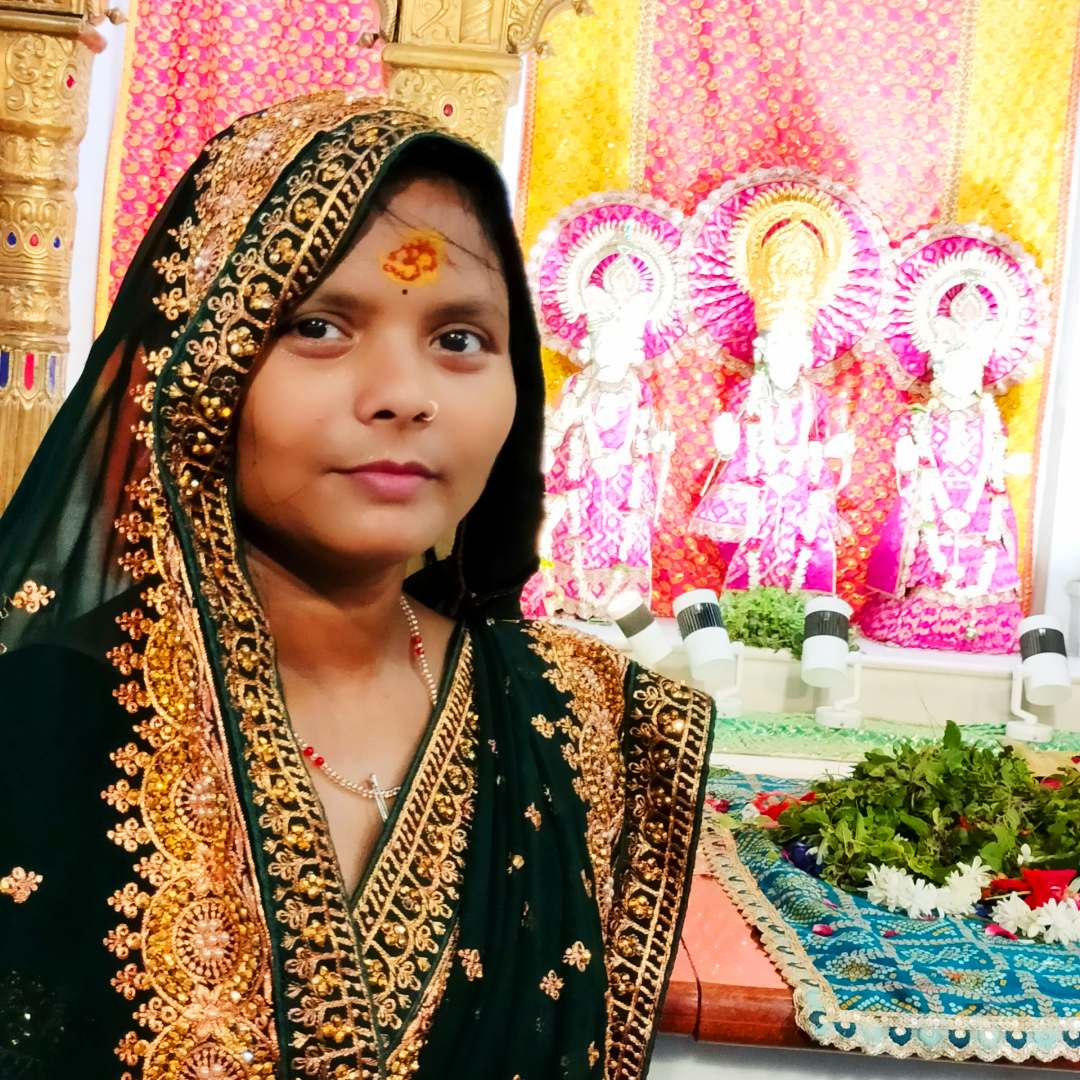
मैं आचार्य सिद्ध लक्ष्मी, सनातन धर्म की साधिका और देवी भक्त हूँ। मेरा उद्देश्य भक्तों को धनवंतरी, माँ चंद्रघंटा और शीतला माता जैसी दिव्य शक्तियों की कृपा से परिचित कराना है।मैं अपने लेखों के माध्यम से मंत्र, स्तोत्र, आरती, पूजन विधि और धार्मिक रहस्यों को सरल भाषा में प्रस्तुत करती हूँ, ताकि हर श्रद्धालु अपने जीवन में देवी-देवताओं की कृपा को अनुभव कर सके। यदि आप भक्ति, आस्था और आत्मशुद्धि के पथ पर आगे बढ़ना चाहते हैं, तो मेरे लेख आपके लिए एक दिव्य प्रकाश बन सकते हैं। जय माँ View Profile